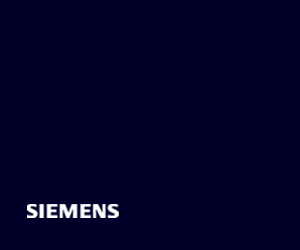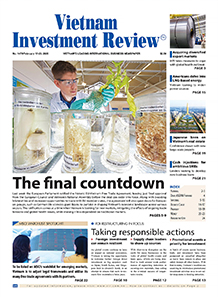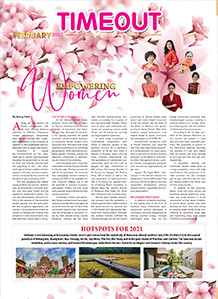Tackling road transport overload

illustration photo
“After stringent measures were taken to keep car loading capacity under control, we reached an agreement with the Vietnam Railways Corporation to transport 10,000 tonnes of sugar from Thanh Hoa to Lao Cai, but weeks have past and our cargo has yet to move,” said Vu Thi Huyen Duc, director of Sugar Company I.
According to a source from the Vietnam Steel Corporation (VSC), they need to transport around a million tonnes of steel billet from Tang Loong industrial zone in the northern highland province of Lao Cai to Hanoi every year. After working with the railway transport sector, it has realised that the transport capacity of this route is already at full capacity.
Similarly, other major railway routes such as the Thong Nhat (north-south), Hanoi-Lang Son and Hanoi-Haiphong have also proven less effective in sharing road transport overload, though their fares are just 60 per cent of road transport.
Commenting on this, Minister of Transport Dinh La Thang said “The Vietnam Railways Corporation needs to take the initiative in making investments in equipment to bolster its transport capacity, particularly as the government will not loosen its limits on car loading capacity.”
Other major transport fields such as shipping and local waterway transport are also offering lower fares and have capacity redundancy, but they have yet to take over some of the work of railways.
Deputy Minister of Transport Nguyen Ngoc Dong said, “Current railway and waterway transport is fragmented. For instance, for cargoes to move between Haiphong and Hanoi, containers have to loaded and unloaded four or five times. If this is not quickly solved, it will be hard to ensure reasonable distribution across different transport modes.”
Thang offered a solution however, “The MoT will soon put into operation a goods transport exchange model, will set fare levels for each transport mode and present criteria to ensure connectivity between diverse transport modes. Also, transport firms need to propose incentives that will lower fees, paving the way to gradually reducing transport fees.”
Thang ordered the railway sector to scale up its investments and restructure its operations to boost capacity.
“If the sector cannot satisfy demand, it needs to prioritise transport of agricultural and forest products and fertilisers to serve farmers,” Thang said.
As for local waterway transport, in the coming time the MoT will focus on improving the infrastructure in southern areas to enhance transport capacity. This includes completing the dredging of the Cho Gao and Chanh Bo canals by 2015.
Also, Hanoi’s western railways running from Hanoi to Lao Cai will finish their upgrade by March 2015, reported the MoT.
“The MoT will establish hot lines to take proposals from businesses and goods consigners facing transport difficulties. Our long-term goal is to lower transport expenses in GDP from their current 15-20 per cent,” Thang concluded.
What the stars mean:
★ Poor ★ ★ Promising ★★★ Good ★★★★ Very good ★★★★★ Exceptional
Latest News
More News
- Ho Chi Minh City hits $8.37 billion in FDI (December 29, 2025 | 08:28)
- Tax sector wraps up 2025 and sets priorities for next year (December 25, 2025 | 14:00)
- Heavy industries set for pilot greenhouse gas quotas (December 25, 2025 | 10:00)
- $250 million deal targets women-owned SMEs, sustainable agriculture (December 22, 2025 | 17:40)
- UOB sees Vietnam growth easing in fourth quarter (December 22, 2025 | 17:39)
- Government moves to establish International Financial Centre (December 21, 2025 | 21:00)
- Vietnam's IFC to target global investment flows (December 21, 2025 | 18:00)
- Ha Tinh breaks ground on major Vingroup industrial and energy projects (December 19, 2025 | 18:24)
- EVN launches major power infrastructure projects nationwide (December 19, 2025 | 18:17)
- VAL inaugurates second production line to meet domestic animal feed demand (December 19, 2025 | 16:37)

















 Mobile Version
Mobile Version